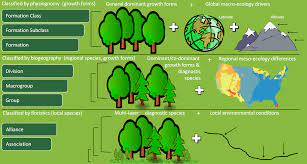- Books Name
- Learn with me Social Science Book
- Publication
- Learn with me publication
- Course
- CBSE Class 9
- Subject
- Social Science
Natural Vegetation and Wild Life
- With over 47,000 plant species, India occupies tenth place in the world and fourth in Asia in plant diversity. It includes 15000 or 6% of the world’s total flowering plants.
- India is one of the twelve mega biodiversity countries of the world.
- India has 89,000 species of animals as well as a rich variety of fish in its fresh and marine waters.
- Plant community which grows naturally with no human help and is not disturbed by humans for a long time is teemed as natural vegetation.
- The term flora denotes plants and fauna denotes species of animals in a specific region.
- The natural vegetation which has been left undisturbed by humans for a long time is called virgin vegetation.
- Virgin vegetation which are purely Indian are known as endemic species and those which have come from outside India are termed as exotic plants.
Factors determining flora and fauna in a region are as follows.
Relief
- The nature of land influences the type of vegetation. It includes mountains, plains and plateaus as well as dry and wet regions.
- Different types of soils provide basis for different types of vegetation. The sandy, deltaic and other types soils support different types of vegetations.
Climate
- Temperature, photoperiod, and precipitation are the three climatic factors which determine natural vegetation.
- The character and extent of vegetation are mainly determined by temperature along with humidity in the air, precipitation, and soil. As per temperature, the vegetation types differ from tropical to subtropical and alpine.
- Period of exposure to sunlight varies for different plants leading to their different rates of growth. Due to longer duration of sunlight trees grow faster in the summer.
- Areas of heavy rainfall have more dense vegetation as compared to other areas of less rainfall.
- Forests are renewable resources and play a major role in enhancing the quality of the environment. They modify local climate, control soil erosion, regulate stream flow, provide livelihood for many communities.
- It controls wind force and temperature and causes rainfall.
- Vegetation in most parts of India has been modified at some places or replaced or degraded by human occupancy.
Ecosystem
- All the plants and animals in an area are interdependent and interrelated to each other in their physical environment, thus forming an ecosystem.
- Human beings are integral part of ecosystem.
- The greed of human beings leads to overutilisation of resources.
- A very large ecosystem on land having distinct type of vegetation and animal life is called a biome.


 Learn with me publication
Learn with me publication
